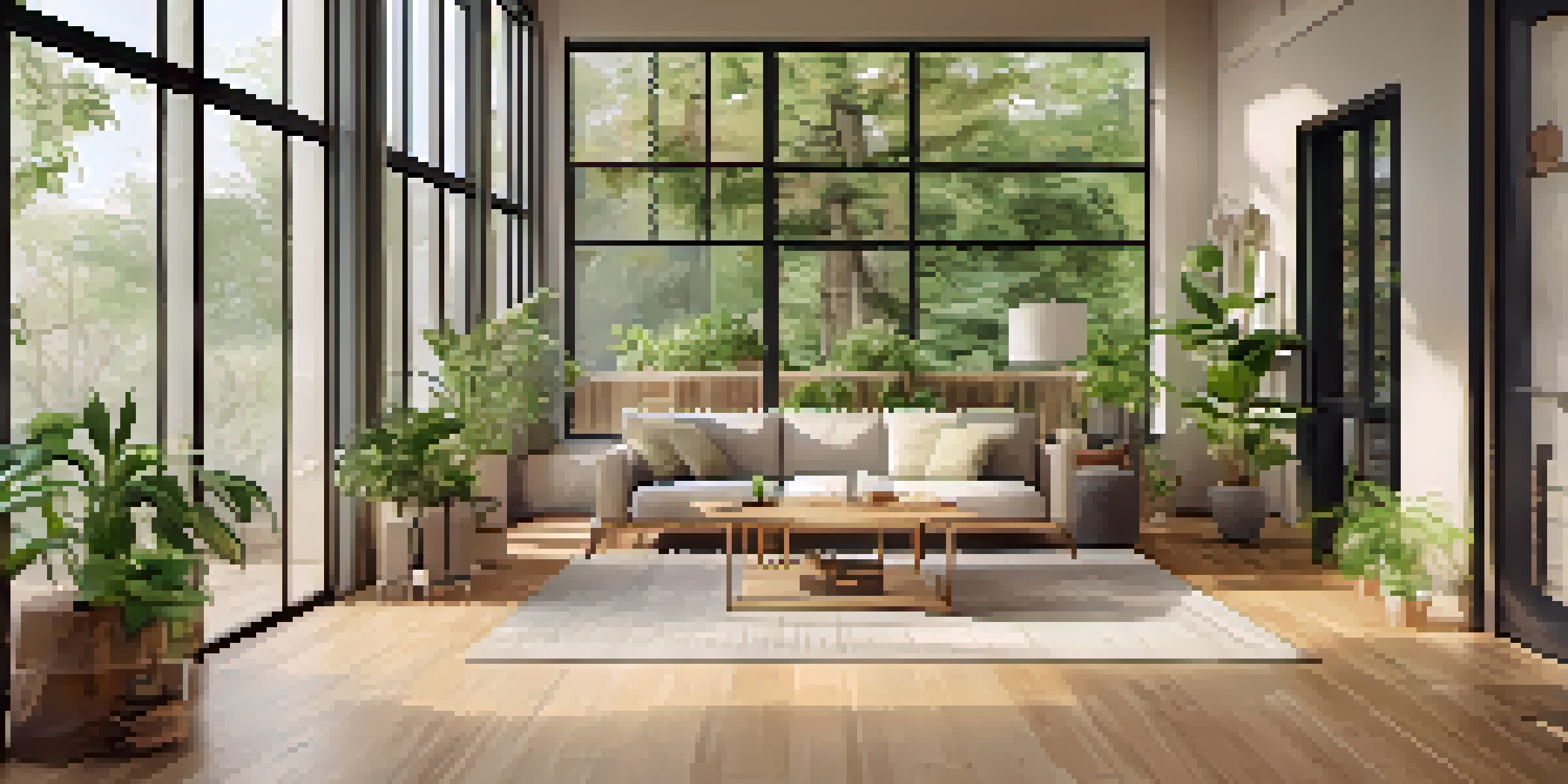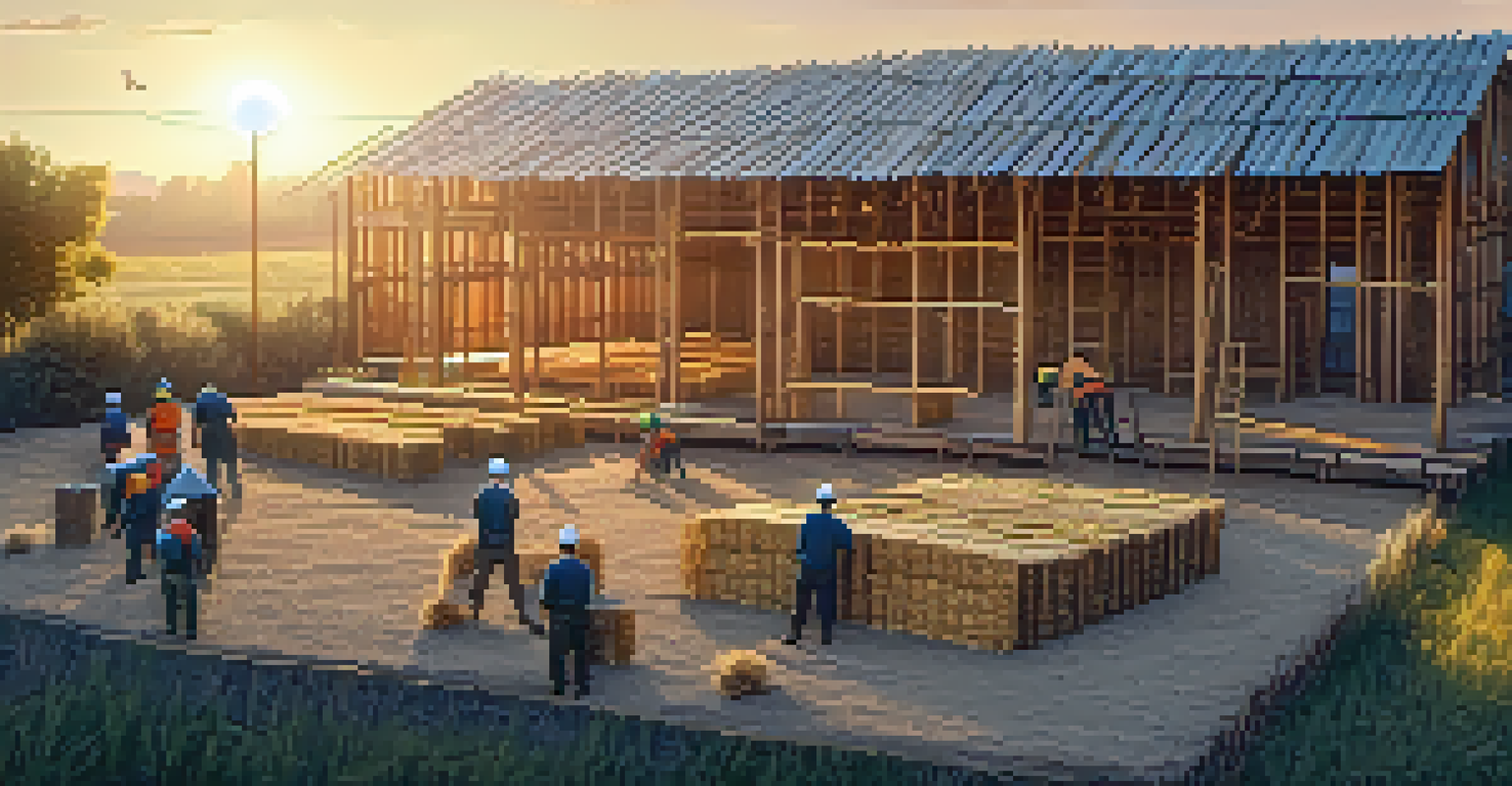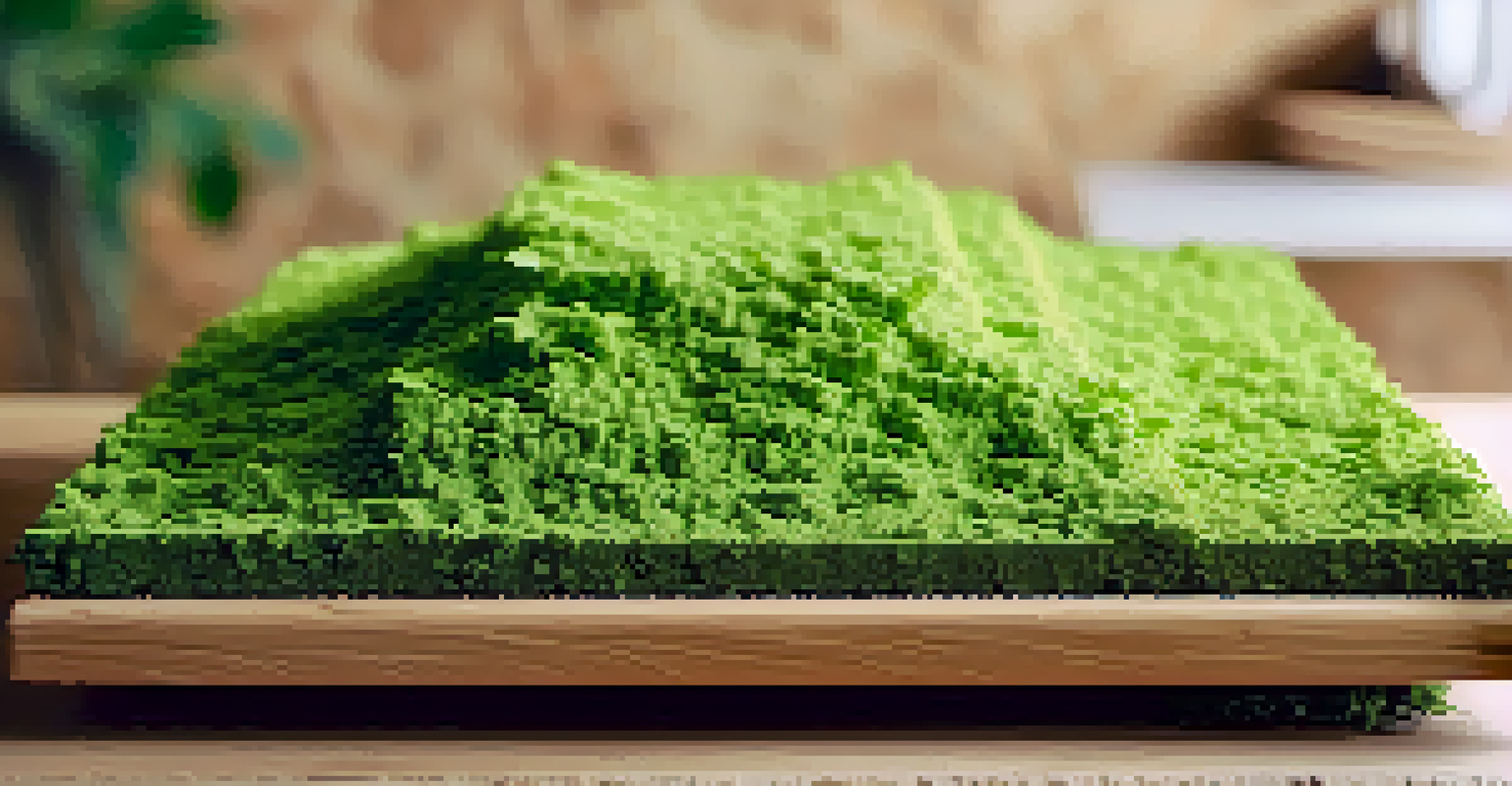Exploring Green Building Materials for Sustainable Design

Understanding Green Building Materials and Their Importance
Green building materials are those that have a minimal impact on the environment. They are sourced sustainably, have low toxicity, and often include recycled content. By choosing these materials, builders can help reduce waste and energy consumption throughout a building's lifecycle.
The greatest threat to our planet is the belief that someone else will save it.
The importance of green building materials goes beyond just aesthetics; they contribute to healthier indoor environments and reduce greenhouse gas emissions. For example, using bamboo instead of traditional timber can help preserve forests while providing a durable and attractive option for construction.
As more individuals and businesses prioritize sustainability, the demand for eco-friendly materials is increasing. This shift not only benefits the planet but also encourages innovation within the construction industry, leading to new solutions that are both functional and sustainable.
Types of Green Building Materials to Consider
There are several types of green building materials available, each serving unique purposes in construction. Renewable materials like bamboo and cork are popular for flooring and cabinetry due to their natural beauty and sustainability. Additionally, recycled materials such as reclaimed wood and recycled metal offer both aesthetic appeal and environmental benefits.

Another category includes low-impact materials like rammed earth and straw bales, which are often used in insulation and wall systems. These materials not only reduce the carbon footprint but also improve energy efficiency in buildings, making them a win-win for homeowners and the planet alike.
Benefits of Green Building Materials
Using green building materials improves indoor air quality, reduces long-term costs, and enhances property value.
Lastly, consider innovative materials like mycelium-based products and hempcrete. These cutting-edge options are gaining traction for their exceptional thermal properties and biodegradability, showing that sustainable design can also mean embracing new technologies.
Benefits of Using Green Building Materials
One of the most significant benefits of using green building materials is their positive impact on health. These materials often contain fewer harmful chemicals, which can lead to improved indoor air quality. For instance, low-VOC (volatile organic compounds) paints and finishes help to create healthier living spaces.
Sustainability is not a destination, but a journey that requires continuous improvement and innovation.
In addition to health benefits, green materials can lead to significant cost savings over time. Although the initial investment may be higher, lower energy bills and reduced maintenance costs can offset these expenses. For example, energy-efficient windows reduce heating and cooling costs, ultimately paying for themselves.
Moreover, utilizing sustainable materials can enhance a property's marketability. As eco-conscious consumers seek out green homes, properties built with sustainable materials can command higher resale values. This trend not only benefits homeowners but also encourages builders to prioritize eco-friendly designs.
Challenges in Sourcing Green Building Materials
While the benefits of green building materials are clear, sourcing them can present challenges. Availability and accessibility can be significant hurdles, especially in regions where sustainable options are limited. Builders may need to invest time and resources to find reliable suppliers of eco-friendly materials.
Cost can also be a barrier. Although many green materials save money in the long run, their upfront costs can be higher than traditional options. This discrepancy may deter some builders and homeowners from making the switch, despite the long-term benefits.
Challenges in Sourcing Materials
Sourcing green building materials can be hindered by availability, higher upfront costs, and a lack of standardized certifications.
Additionally, the lack of standardized certifications for green materials can lead to confusion. As consumers, it's essential to do thorough research and seek materials that are genuinely sustainable. This ensures that the chosen products live up to their eco-friendly claims.
How to Integrate Green Materials into Your Design
Integrating green building materials into your design starts with planning. Consider the specific needs of your project and how sustainable materials can meet those needs effectively. For example, if energy efficiency is a priority, you might opt for higher insulation ratings or solar-reflective roofing materials.
Collaboration with architects and builders who specialize in sustainable practices is crucial. Their expertise can guide you in selecting the best materials while ensuring that your design remains functional and aesthetically pleasing. Engaging with professionals can also help you navigate any local building codes that pertain to eco-friendly construction.
Finally, don't forget about the importance of education. By staying informed about new developments in sustainable materials, you can make better choices that align with your environmental values and design goals. Continuous learning will empower you to innovate and advocate for greener building practices in your community.
Government and Industry Support for Green Building
Government initiatives play a significant role in promoting the adoption of green building materials. Many countries offer tax incentives, grants, and rebates for projects that incorporate sustainable practices. These financial incentives can help offset the initial costs of green construction, making it more appealing to builders and homeowners.
Additionally, industry organizations have developed certification programs like LEED (Leadership in Energy and Environmental Design) that recognize buildings for their sustainable practices. These certifications not only motivate builders to adopt green materials but also inform consumers about the environmental impact of their purchases.
Future Trends in Green Building
Ongoing innovation and increasing consumer awareness are driving the future demand for more sustainable building materials.
Networking with other professionals in the green building community can also provide valuable resources and support. Conferences, workshops, and online forums are excellent platforms for sharing knowledge and experiences, ultimately fostering a more sustainable future in construction.
The Future of Green Building Materials
The future of green building materials is bright, with ongoing research and innovation driving the industry forward. As technology advances, we can expect to see new materials that are even more efficient, sustainable, and effective. For example, developments in bioplastics and smart materials are already paving the way for a new era in construction.
Moreover, as consumer awareness of environmental issues grows, the demand for green materials will likely increase. This shift will encourage manufacturers to invest in sustainable practices, resulting in a wider variety of eco-friendly options available on the market. This expanding selection will make it easier for builders and homeowners to make sustainable choices.

Ultimately, the integration of green building materials into mainstream practices will contribute to a healthier planet and healthier living spaces. By embracing this trend, we can work towards a more sustainable future where eco-conscious design is the norm rather than the exception.